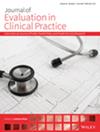Converting Evidence-Based Summary of Findings Evidence Tables Into Decision Analytical, Quality Adjusted Life Years (QALY) and Life Expectancies Metrics: A Tutorial
Abstract
Rationale, Aims, and Objectives
We have recently succeeded in integrating evidence estimation with decision-analytical frameworks, thereby addressing a major challenge in advancing the science of evidence-based medicine (EBM) and clinical practice guidelines. However, the primary output of our analysis was expressed as net differences in expected utility (ΔEU) between competing treatment interventions. Although expected utility is a standard decision-analytic metric, it is not intuitively understood by most clinicians. Here, we demonstrate how ΔEU can be converted into gains in quality-adjusted life years (QALYs) and life expectancy (LE).
Methods
We begin with GRADE (Grading of Recommendations Assessment, Development, and Evaluation) Summary of Findings (SoF) tables—the primary outputs of systematic reviews that underpin guideline recommendations—to generate ΔEU, which we subsequently convert into QALY and LE gains using the DEALE (Declining Exponential Approximation of Life Expectancy) method. We also integrate patients’ values and preferences by relating minimal important differences (MIDs)—the smallest change in an outcome that patients perceive as important enough to justify a change in management—to relative values, which reflect the preference (or weight) assigned to avoiding a specific health outcome compared to the worst outcome (mortality).
To convert a deterministic ΔEU model into a probabilistic one, we employ Monte Carlo simulation to assess the credibility of recommendations under the evidentiary uncertainty included in the SoF tables. We also provide a method to assess the impact of the certainty of evidence (CoE) on the robustness of the results.
Results
We developed a user-friendly, Excel-based calculator for converting evidence-based SoF tables into ΔEU, and subsequently into QALY and LE gains. We illustrate our methods by comparing the effects of short-term versus indefinite anticoagulation for the prevention of recurrent venous thromboembolism. The complete analysis can be performed in approximately 5–10 min.
Conclusion
We extend our methods to link estimation metrics commonly used in the EBM field with decision-analytic metrics such as expected utility, QALY, and LE. We present a user-friendly calculator that integrates all key domains underpinning contemporary guideline development.


 求助内容:
求助内容: 应助结果提醒方式:
应助结果提醒方式:


